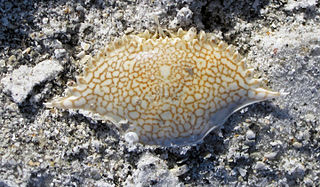
The American dipper, also known as a water ouzel, is a stocky dark grey bird with a head sometimes tinged with brown, and white feathers on the eyelids that cause the eyes to flash white as the bird blinks. It is 16.5 cm (6.5 in) long, has a wingspan of 23 cm, and weighs on average 46 g (1.6 oz). It has long legs, and bobs its whole body up and down during pauses as it feeds on the bottom of fast-moving, rocky streams. It inhabits the mountainous regions of Central America and western North America from Panama to Alaska.
Myrmeleon mexicanus is a species of antlion in the family Myrmeleontidae. It is found in Central America and North America.
Conotelus mexicanus is a species of sap-feeding beetle in the family Nitidulidae. It is found in Central America, North America, and Oceania.

Ululodes mexicanus is a species of owlfly in the family Ascalaphidae. It is found in Central America.
Amblygnathus mexicanus is a species of ground beetle in the family Carabidae. It is found in North America.

Paratettix mexicanus, the Mexican pygmy grasshopper, is a species of pygmy grasshopper in the family Tetrigidae. It is found in Central America and North America.
Pogonodaptus mexicanus is a species of ground beetle in the family Carabidae. It is found in Central America and North America.
Lexiphanes mexicanus is a species of case-bearing leaf beetle in the family Chrysomelidae. It is found in Central America and North America.
Laccophilus mexicanus is a species of predaceous diving beetle in the family Dytiscidae. It is found in North America and the Neotropics.
Hylesinus mexicanus is a species of crenulate bark beetle in the family Curculionidae. It is found in North America.
Cremastocheilus mexicanus is a species of scarab beetle in the family Scarabaeidae.
Heterocerus mexicanus is a species of variegated mud-loving beetle in the family Heteroceridae. It is found in Central America and North America.
Brachinus mexicanus is a species of ground beetle in the family Carabidae. It is found in Central America and North America.
Trachypus mexicanus is a species of wasp in the family Crabronidae. It is found in Central America.

Triepeolus mexicanus is a species of cuckoo bee in the family Apidae. It is found in Central America and North America.
Neospondylis is a genus of long-horned beetles in the family Cerambycidae. There are at least two described species in Neospondylis.

Psammaletes is a genus of sand wasps in the family Crabronidae. There are about nine described species in Psammaletes.

Arenaeus is a genus of swimming crabs in the family Portunidae. There are at least two described species in Arenaeus.
Miagrammopes mexicanus is a species of cribellate orb weaver in the spider family Uloboridae. It is found in the United States and Mexico.
Eunemobius carolinus, the Carolina ground cricket, is a species of ground cricket in the family Trigonidiidae. It is found in North America.






